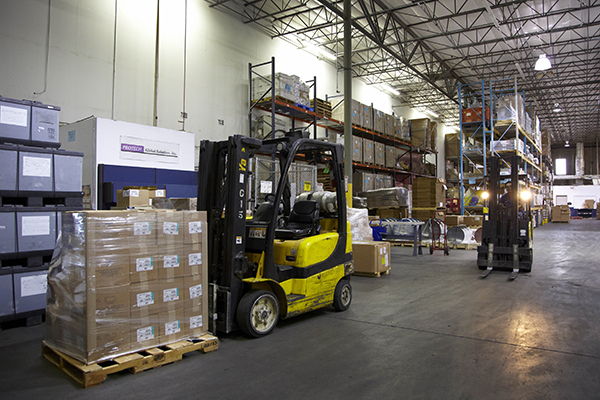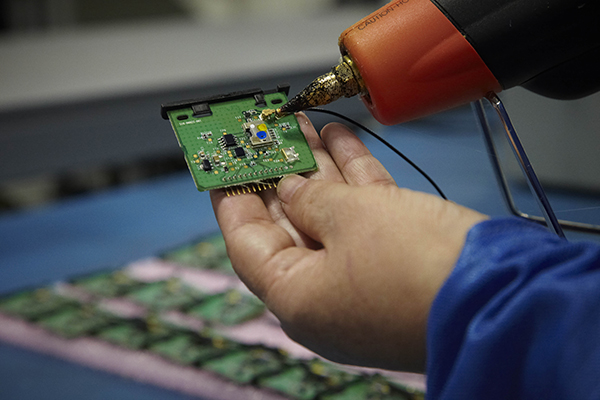Current Issue
US or Mexico: Which Option Makes Most Sense for Your Project?
Making accurate cost comparisons goes beyond hourly labor rates.
Studies by the Boston Consulting Group and Alix Partners indicate that US and Mexico manufacturing costs are at or below those of China when total costs are considered. While Mexico’s costs are lower than the US, given that crossing a border typically adds complexity and carries risk for cost surprises, is Mexico always the lowest-cost solution?
Protech Global Solutions, an electronics manufacturing services provider headquartered in El Paso, TX, with manufacturing operations in both El Paso and Juarez, Mexico, looks at that issue with every project and often quotes both options to better illustrate cost differences. In assessing which side of the border makes sense from a total cost perspective, there are five key considerations:
Labor content of product. The cost of highly automated products should be evaluated carefully because material and equipment cost is the same in both countries, and utilities are often higher in Mexico. Crossing a border also adds Customs processing and logistics costs. When those added costs are considered, highly automated products are either at parity or slightly higher in cost if the end-market is on the opposite side of the border. As a rule of thumb, labor content should be between 20 to 30% to save money by manufacturing in Mexico. In Protech’s comparisons, companies can expect to see assembly cost savings of 10 to 15% in Mexico over the US cost on medium-volume projects with at least 20% labor content.

Figure 1. Understanding the logistics equation is important in determining whether US or Mexico manufacturing makes the most sense. Above, Protech Global Solutions’ US warehouse supports both its US and Mexico manufacturing operations, finished goods kanban and customer fulfillment activities.
Variability of demand. Customs and transportation/logistics costs are negligible when shipments are consolidated into one or two border crossings per week.
Finished goods Kanban in a US warehouse and some raw material safety stock in the Mexico facility can keep crossings low when demand is fairly predictable. However, if there is high variability in demand, the likely cost of addressing that should be carefully calculated. What is the value of the finished goods inventory Kanban that must be kept in place? How much space will it occupy? How much extra raw material must be kept in the pipeline? How many extra crossings will historical variability in demand likely drive per week? The answer may still be that Mexico offers the lower cost, but considering those issues upfront will better set expectations for likely cost savings.
Project size. The size of the project also matters. The annualized savings on a single low-volume project may not balance out against the higher internal costs of working cross-border. That said, clustering a product family with a mix of low- and medium-volume production may provide the needed scale to drive significant annualized cost savings.
Build site location. The location of the manufacturer should also be a cost consideration. Mexico is one country where it is possible to get offshore pricing with almost zero distance from the US manufacturing facilities near a border finished goods may be crossing the same day they are manufactured. However, some border locations are easier to reach than others. For example, Juarez, Mexico, is roughly 15 min. from the El Paso, TX, airport, which has direct flights from Chicago, LA, Denver, Dallas, Houston, Las Vegas and Phoenix. Most other border locations require drives of 45 min. to several hours from large cities with direct air connections.

Figure 2. Product with manual labor content exceeding 20% may be more cost-effectively produced in Mexico.
While cities in the Mexico interior such as Guadalajara and Monterrey also have strong manufacturing clusters, they also have additional logistics costs. The farther away from a border, the greater the supply chain pipeline. Depending on road quality, air shipments may be preferred over truck shipments in some locations. Additional insurance may be required on road shipments from some locations.
While US locations have similar cost differences linked to distance, the US highway network is far more comprehensive and secure than the interior highway system of Mexico. This can result in shorter transit times and lower transportation-related costs. That said, the issues associated with team travel time in terms of flight convenience definitely apply.
In short, don’t simply evaluate each country as a single option. Instead, consider the unique costs attributable to each location choice.

Figure 3. Flexible automated assembly is key to keeping US assembly operations cost-competitive.
End-market. Another cost consideration is the product’s end-market. Where will the product ship after production? Mexico has a number of industries experiencing strong growth, including automotive, aerospace and appliances. As a result, companies supplying those factories are often seeking contract manufacturers near the customer they are supplying. In those cases, Mexico is typically the lowest cost option. If the end-market is in the US, or the product will ship globally, the cost difference may not be as great. In some cases, free trade agreements between the US or Mexico and the end-market country may also be a factor in determining the most cost-effective choice.
The bottom line is the cost difference between the US and Mexico is close enough that low-to-medium volume projects should be carefully evaluated to determine which country offers the lowest total cost for that particular project. Each country also has “soft” advantages that may influence the final decision if pricing is close. For example, the US offers greater personal security and the ease of doing business within a common legal system with clearly understood laws.
Many US contract manufacturers have made significant investments in systems and automation to increase cost-competitiveness. That said, Mexico has a high-quality, well-trained labor pool and, in some regions, may have workforces with broader skill bases than easily found in the US, particularly in skilled trades such as tooling and metal fabrication. The growing popularity of Mexico as a manufacturing location is testament to the fact that Mexico’s security situation is improving.
The best way to determine which side of the border is the best choice for a specific project is to bid contractors in both countries (or contractors with multinational operations), plus consider the additional costs likely to be driven by the factors discussed above.
is president of Protech Global Solutions (protechglobalsolutions.com); joe@protechglobalsolutions.com.







